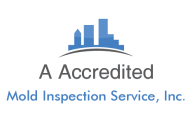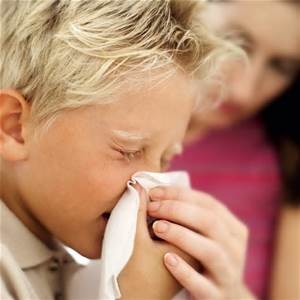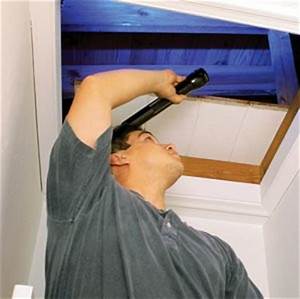All About Toxic Black Mold and Toxic Black Mold Inspections
The below toxic black mold information is provided by A Accredited Mold Inspection Service, Inc. We have offered mold inspections and indoor air quality testing in all of South East Florida since 2003.
Feel free to call us if you need our mold inspection services 1-888-381-6651.

Mold hidden behind fiberglass insulation in a massive bank we inspected in the Florida Panhandle. The building was still under construction when the mold growth occurred.
Where Does Toxic Black Mold Grow?
It is the most feared of all molds. It is feared due to the numerous news reports, newspaper articles, and magazine articles on this mold. People attribute possible brain damage, infant deaths, cancer, and expensive property damage to this mold.
Toxic black mold also known as Stachybotrys is a slow growing mold and requires elevated levels of water in it’s substrate. It requires more moisture than most other types of house mold. This inspector commonly finds it growing in wet, dark, hidden areas. It loves areas where a slow hidden leak can cause sever soaking of building materials for a few weeks or months.
According to literature and according to this inspector’s experience, this mold grows exclusively on very wet cellulose containing materials including paper, carpets, ceiling tiles, and especially on drywall. It loves drywall because of the cellulose paper on the front and back surfaces of drywall. It is not found growing on wet wood as often as one would think. The cellulose food in wood is protected to some degree by wood’s hard to digest lignin. In water damaged buildings the wood surfaces are more likely to be colonized by Chaetomium and Pen Asp mold.

Toxic black mold found in the Fl Keys by our West Palm Beach mold inspector.
How Likely Is It to Be Found During Toxic Black Mold Inspections?
In indoor samples toxic black mold or Stachybotrys is found during mold inspections about 6% of the time. It is found about 1% of the time in outdoor samples.

Black mold and other molds found by us during a mold inspection in Lake Worth near West Palm Beach.
Why Do Some Molds Produce Toxins?
About a half dozen distinct types of molds produce mycotoxins (toxic chemicals that molds use in a type of microbial warfare). Living things that do not possess claws, fangs, or a hard shell to use in self-defense use toxins. Animals that lack fast legs to run away from predators will also often revert to the use of toxins for defense. This is quite common in nature.
Am I In Danger from These Molds?
Based on my own personal experience, toxic molds are a health problem typically not because of the toxins but because of the allergens they release. This is based on my own personal mold inspection experience. I have been doing mold inspections for over 20 years in West Palm Beach and all of South Florida. I see people become equally ill from all types of molds and not more ill from toxic mold.
At this time, it appears that mold like Stachybotrys also known as toxic black mold and others may have to be consumed in mold contaminated foods in order for non-allergy type toxic reactions to be more likely. At this time most scientists do not believe that breathing in toxic black mold spores can have toxic effects on humans when inhaled at the levels typically encountered in homes and offices. This is not just based on my own observations, but also on scientific literature.
The Scientists Opinion
Of course, my opinion and observations may change over time. In the future we may find that toxic molds cause toxic reactions via inhalation, but currently scientific evidence does not support the view that toxic molds can poison you via inhalation at levels found in indoor environments.
To support this statement please review the following abstract from the International Journal of Toxicology Volume 23, Number 1 / January-February 2004 pages 3 to 10.
“Risk from Inhaled Mycotoxins in Indoor Office and Residential Environments
Bruce J. Kelman A1, Coreen A. Robbins A1, Lonie J. Swenson A1, Bryan D. Hardin A1 A1 GlobalTox, Inc., Redmond, Washington, USA
Abstract:
Mycotoxins are known to produce veterinary and human diseases when consumed with contaminated foods. Mycotoxins have also been proposed to cause adverse human health effects after inhaling spores in indoor residential, school, and office environments. Epidemiological evidence has been inadequate to establish a causal relationship between indoor mold and non-allergic, toxigenic health effects.
Article Conclusion
In this article, the authors model a maximum possible dose of mycotoxins that could be inhaled in 24 h of continuous exposure to a high concentration of mold spores containing the maximum reported concentration of aflatoxins B1 and B2, satratoxins G and H, fumitremorgens B and C, verruculogen, and trichoverrols A and B. These calculated doses are compared to effects data for the same mycotoxins.
None of the maximum doses modeled were sufficiently high to cause any adverse effect. The model illustrates the inefficiency of delivery of mycotoxins via inhalation of mold spores and suggests that the lack of association between mold exposure and mycotoxicoses in indoor environments is due to a requirement for extremely high airborne spore levels and extended periods of exposure to elicit a response. This model is further evidence that human mycotoxicoses are implausible following inhalation exposure to mycotoxins in mold-contaminated home, school, or office environments.”
The Mold Inspectors Opinion
I am in agreement with the scientists. One important limitation of the above article should be noticed. The test subjects were only exposed to extremely elevated levels of very toxic molds for 24-hour periods. Thus, this study seems to indicate that toxic molds will likely not poison you if you simply breathe spores in. However, if the test went on for years and not hours the outcome may have been drastically different. This shows you that current data supports the idea that breathing in mold will not poison you, but the science could be wrong and evolve over time.
It appears very doubtful that toxic mold will poison you via inhalation. One thing I know for sure is that mold will cause non-toxic reactions. It has been observed by this inspector many times that mold can make some people very sick. Asthma attacks, allergies, and sinus infections from mold appear to be very common. Such conditions can cause people to cough, sneeze, and experience congestion and sinus headaches. Victims often lose sleep, lose energy and concentration, miss work, and in general feel as if they were being poisoned by mycotoxins.
I have seen many toxic black mold inspection clients become an emotional reck because of the fear of toxic mold. Sometimes, the fear of toxic mold causes more illness than mold toxins.
About A Accredited Inspection Service:
We only do mold inspections, thus have no conflict of interest; we only have your health as our concern. We do not perform mold remediation jobs. Having no conflict of interest at A Accredited Mold Inspection Service we provide honest information on Stachybotrys or toxic black mold as it relates to your health.
We are a fully certified mold inspection firm conducting indoor air quality and mold investigation. We inspect office buildings and residential properties.

So, if you need an honest opinion and inspection for toxic mold give us a call.
1-888-381-6651




